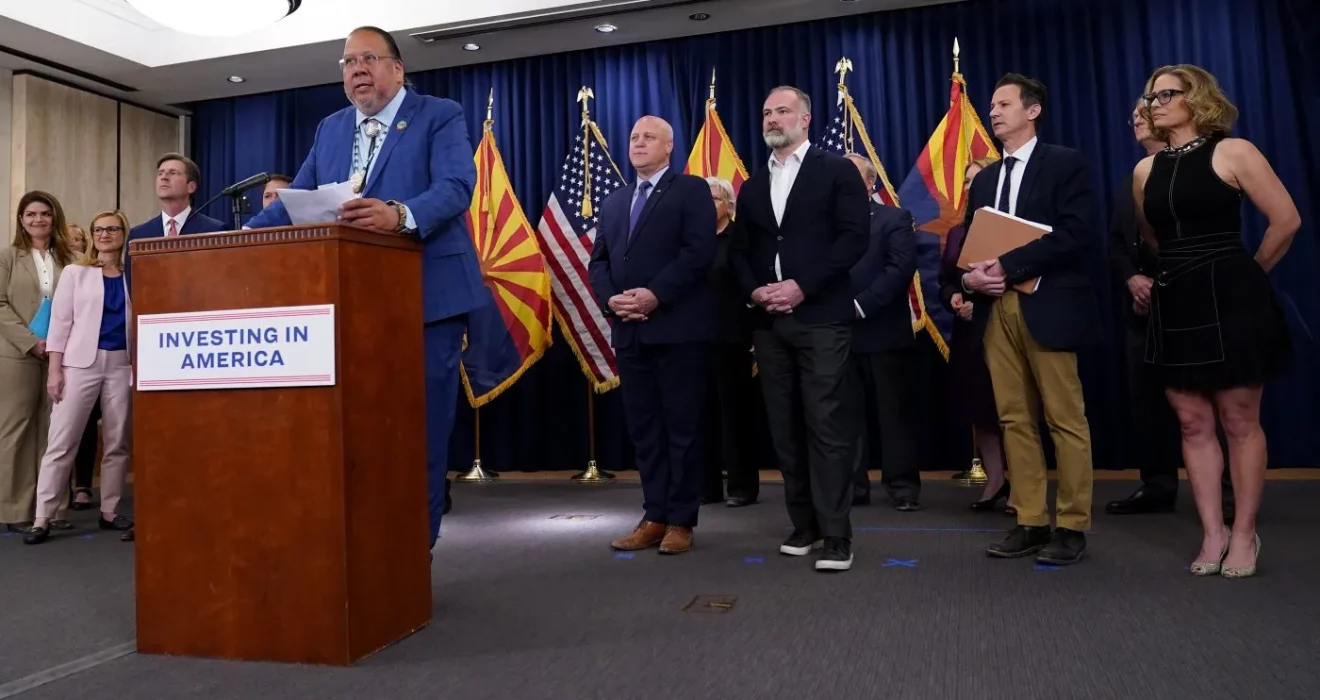In a transformative leap towards sustainable water management, the Gila River Indian Community has embarked on an unprecedented initiative, joining forces with the U.S. Army Corps of Engineers to pioneer the integration of solar panels over a crucial stretch of irrigation canal within its southern Phoenix territory. This visionary project is poised to establish a groundbreaking standard for water conservation in the United States. By strategically placing solar panels over the canal, the community not only aims to combat water scarcity but also to harness renewable electricity, marking a significant stride towards a more environmentally sustainable future.
This innovative endeavor is set to be a trailblazer, showcasing a harmonious fusion of cutting-edge technology and ecological responsibility. As the first of its kind in the country, the Gila River Indian Community’s Solar Canal Project not only tackles the pressing issue of water loss but also serves as a beacon of inspiration for communities nationwide seeking holistic solutions to their environmental challenges. In the face of mounting concerns about water resources, this project emerges as a symbol of proactive, community-driven efforts to revolutionize water conservation practices.
Historic Moment for Water and Energy Nexus
Gila River Indian Community Governor, Stephen Roe Lewis, characterized the agreement as a historic moment not only for the tribe but also for the broader region and Indian Country. In a video shared on social media, he emphasized the significance of the community leading in technology that combines water conservation and renewable energy. The first phase of the project, slated for completion in 2025, aims to cover 1000 feet of canal and generate one megawatt of electricity, which will be utilized for crop irrigation, including livestock feed, cotton, and grains.
Tapping into Solar Solutions for Water Scarcity
The concept behind the initiative is elegantly simple yet powerful: installing solar panels over canals in sun-drenched, water-scarce areas to reduce evaporation and simultaneously generate renewable electricity. Gila River Indian Community takes pride in being at the forefront of water conservation efforts, with this project poised to make a substantial impact on the community’s sustainability goals.
Addressing Water Loss on a Massive Scale
Drawing inspiration from a study conducted by the University of California, Merced, which estimated that California could save 63 billion gallons of water annually by covering its 4,000 miles of canals, over 100 climate advocacy groups are championing similar projects. The potential dual benefits of water preservation and electricity generation have garnered interest from researchers and organizations alike, opening the door for widespread adoption of solar-covered canals.
Learning from Past Attempts and Overcoming Challenges
While the Gila River Indian Community’s project marks a significant leap forward, it is not the first globally to implement solar-covered canals. However, previous attempts, such as those in Gujarat state by Indian engineering firm Sun Edison in 2012, faced challenges like high capital costs, clunky design, and maintenance issues. The lessons learned from these experiences have informed the current project, demonstrating resilience and adaptability in the face of obstacles.
Water as a Key Political Issue Amidst Drought
The western U.S. is currently grappling with severe, prolonged drought, elevating water to a crucial political issue. In response, water managers are exploring innovative technologies, including cloud seeding and solar-covered canals, to preserve water reserves. The Gila River Indian Community’s commitment to such a project signifies a proactive stance in the midst of this water crisis, showcasing a dedication to water conservation that goes beyond tested solutions.
Tribal Leadership and Federal Support
The commendable leadership of the Gila River Indian Community in the realm of water conservation stands out, particularly considering the intricacies of tribal sovereignty and the complex landscape of water rights in the region. Heather Tanana, a law professor and member of the Navajo Nation, praises the tribe’s unwavering commitment as an exemplary model that dispels concerns related to water rights disputes.
This noteworthy commitment is further bolstered by substantial support from the federal government. Acknowledging the vital importance of water-saving initiatives, the federal government has allocated significant funding to the Gila River Indian Community. A substantial $233 million pact has been earmarked for overarching water-saving projects, underlining the gravity of the water-related challenges in the region. Additionally, the federal contribution of $517,000 for the design phase of the solar canal project exemplifies a collaborative effort to empower innovative solutions at the intersection of water conservation and renewable energy.
In tandem, the tribal leadership’s commitment and the federal government’s financial backing not only fortify the Gila River Indian Community’s pivotal role in water conservation but also set a noteworthy precedent for cooperative efforts addressing environmental concerns in indigenous territories.
Conclusion
The Gila River Indian Community’s foray into solar-covered canals is not only a technological milestone but also a testament to the tribe’s dedication to sustainable water management and renewable energy. As the project progresses, it stands as a beacon of inspiration for other communities grappling with water scarcity, offering a blueprint for integrating innovation, environmental stewardship, and tribal leadership.

